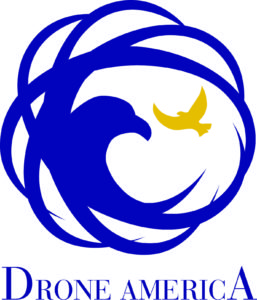
The Best of Planes and Drones
Thrush Aircraft manufactures small manned planes; Drone America designs and manufactures commercial drones. “The new tanker is expected to blend Thrush’s large airframe and airborne delivery system expertise with Drone America’s “Ariel” amphibious platform – resulting in an aircraft capable of delivering some 800 gallons of water or fire retardant, autonomously,” says a press release. “The aircraft will also have the ability to conduct long-duration tactical surveillance flights over a fire to give firefighters, operations managers, and public safety coordinators on the ground real-time understanding of conditions and fire behavior.”
“As the almost incomprehensible devastation of the 2017 fire season has shown, there is virtually no limit to the level of destruction to property and natural environments wildfires can cause,” said Mike Richards, president and CEO of Drone America. “We founded our company on the belief that highly-reliable, well-integrated autonomous systems can significantly improve public and environmental safety. Our collaboration with Thrush represents a major step forward in achieving that goal, and we’re excited to be joining forces in the fight against one of our country’s most challenging foes: wildland fires.”
The “Dark Window”
Autonomous tankers have a unique advantage over manned aircraft – they can fly at night. “Currently, only manned air tankers are used in airborne firefighting operations, and they are restricted from fighting fires during night hours,” says the announcement. “However, it is during this “dark window” that autonomous tankers can take special advantage of the cooler night temperatures and reduced fire activity to support tactical ground operations, without risking the lives of pilots.”
Drones are already becoming widely adopted in firefighting: used to identify hotspots, plan strategy, monitor wind and other factors, and get a birds’ eye view of the terrain.
Payne Hughes, president and CEO of Thrush Aircraft, said: “Thrush prides itself in continuously bringing the highest levels of innovation and value to our industry – and joining in the fight to better control wildfires from the air is in perfect alignment with our recent introduction of the 510G Switchback and its advanced manned-aircraft firefighting capabilities.”
“Collaborating with Drone America now gives us the ability to enhance airborne firefighting even more, by applying our design, manufacturing and flight test capabilities to a whole new generation of autonomous aircraft that can do things manned aircraft simply can’t do safely, or as efficiently. We couldn’t be more pleased to be getting this new relationship underway,” he concluded.
“Teams from both companies will also explore other unmanned heavy-payload applications such as humanitarian aid, disaster relief, remote cargo transportation and maritime patrol, for which airframes from Thrush could be uniquely suited,” says the announcement.
Miriam McNabb is the Editor-in-Chief of DRONELIFE and CEO of JobForDrones, a professional drone services marketplace, and a fascinated observer of the emerging drone industry and the regulatory environment for drones. Miriam has penned over 3,000 articles focused on the commercial drone space and is an international speaker and recognized figure in the industry. Miriam has a degree from the University of Chicago and over 20 years of experience in high tech sales and marketing for new technologies.
For drone industry consulting or writing, Email Miriam.
TWITTER:@spaldingbarker
Subscribe to DroneLife here.